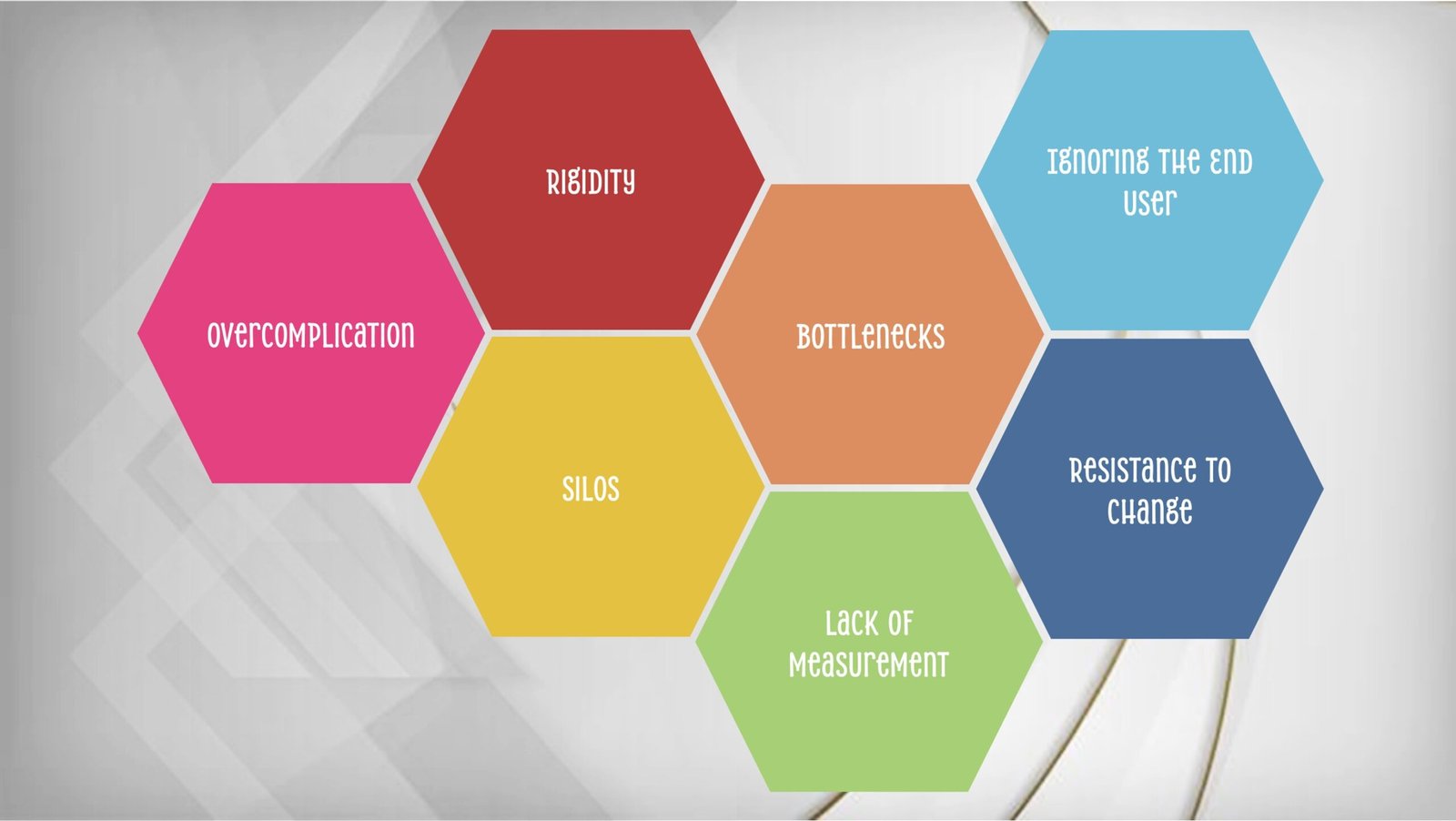In the world of business and organizational management, well-designed processes are crucial for efficiency, productivity, and success. However, many organizations fall prey to common pitfalls when designing their processes. This blog post will explore “The Seven Deadly Sins of Process Design,” highlighting these frequent mistakes, explaining why they occur, and discussing their potential consequences. We’ll also offer insights on how to avoid or correct these issues.
1. Overcomplication: The Sin of Unnecessary Complexity
What: Overcomplication occurs when a process includes too many steps, excessive approvals, or unnecessary bureaucracy.
Why: This often happens due to a desire for perfection, fear of missing important details, or accumulation of legacy procedures over time.
How: To avoid overcomplication, regularly review processes and ask, “Is this step truly necessary?” Use flowcharts to visualize the process and identify redundancies.
Consequence: Overcomplicated processes lead to delays, frustration, and decreased productivity.
Example: A simple expense reimbursement that requires five levels of approval, causing weeks of delay for a $50 claim.
2. Rigidity: The Sin of Inflexibility
What: Rigid processes are those that cannot adapt to changing circumstances or unique situations.
Why: Rigidity often stems from a desire for consistency or a lack of trust in employees’ judgment.
How: Build flexibility into processes by allowing for exceptions and empowering employees to make decisions within defined parameters.
Consequence: Inflexible processes can lead to missed opportunities, decreased customer satisfaction, and employee frustration.
Example: A strict return policy that doesn’t account for extenuating circumstances, resulting in lost customers and negative reviews.
3. Silos: The Sin of Disconnection
What: Siloed processes occur when different departments or teams work in isolation without proper communication or integration.
Why: Silos often develop due to organizational structure, lack of cross-functional communication, or competing priorities.
How: Encourage cross-functional collaboration, implement integrated software systems, and create processes that span multiple departments.
Consequence: Siloed processes result in duplication of efforts, inconsistent customer experiences, and inefficiencies.
Example: A sales team promising delivery dates without consulting the production department, leading to missed deadlines and unhappy customers.
4. Bottlenecks: The Sin of Congestion
What: Bottlenecks are points in a process where work piles up due to limited capacity or resources.
Why: Bottlenecks often occur due to uneven workload distribution, lack of resources, or poorly designed workflows.
How: Identify bottlenecks through process mapping and analysis. Redistribute workload, automate where possible, or allocate additional resources to problem areas.
Consequence: Bottlenecks cause delays, increased costs, and reduced overall efficiency.
Example: A single quality control inspector responsible for checking all products, creating a backlog in the production line.
5. Lack of Measurement: The Sin of Flying Blind
What: This sin involves failing to establish clear metrics or key performance indicators (KPIs) for processes.
Why: Lack of measurement often occurs due to uncertainty about what to measure or difficulty in quantifying certain aspects of a process.
How: Define clear, relevant KPIs for each process. Implement systems to track these metrics and regularly review performance.
Consequence: Without measurement, it’s impossible to identify areas for improvement or gauge the success of process changes.
Example: A customer service department that doesn’t track response times or satisfaction rates, missing opportunities to improve service quality.
6. Ignoring the End User: The Sin of Self-Centeredness
What: This occurs when processes are designed without considering the needs or experiences of the end users (customers or employees).
Why: It often happens when process designers are disconnected from day-to-day operations or lack empathy for users.
How: Involve end users in process design. Conduct user testing and gather feedback regularly to ensure processes meet user needs.
Consequence: User-unfriendly processes lead to dissatisfaction, decreased adoption rates, and potential loss of customers or employees.
Example: An overly complicated online checkout process that causes customers to abandon their purchases.
7. Resistance to Change: The Sin of Stagnation
What: This sin involves clinging to outdated processes despite changing circumstances or available improvements.
Why: Resistance to change often stems from fear of the unknown, comfort with the status quo, or lack of resources for implementation.
How: Foster a culture of continuous improvement. Regularly review and update processes and communicate the benefits of changes to all stakeholders.
Consequence: Failing to evolve processes can lead to decreased competitiveness, inefficiencies, and missed opportunities for innovation.
Example: A company continuing to use paper-based record-keeping despite the availability of more efficient digital solutions.
By avoiding these seven deadly sins of process design, organizations can create more efficient, effective, and user-friendly processes. Remember, good process design is an ongoing effort that requires regular review, adaptation, and a willingness to embrace change. By staying vigilant and addressing these common flaws, businesses can streamline their operations, improve customer satisfaction, and gain a competitive edge in today’s fast-paced business environment.





How NLP can help understand buisness prospects for small pvt ltd firm?